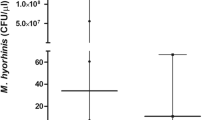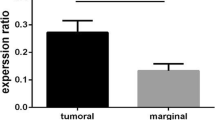Abstract
Gastric cancer is the second leading cause of cancer-related deaths worldwide and it seems that environmental and lifestyle factors and infection with Helicobacter pylori (H.pylori)have had a major role in the etiology of gastric cancer. The aim of this study was to investigate the presence of H. pylori DNA in archival gastric tissues of patients with gastric cancer disease by rapid, sensitive and specific technique of Scorpion Realtime PCR. This retrospective cross-sectional study was performed on 285 paraffin embedded gastric specimens of patients who were pathologically proved for gastric cancer admitted in Bou-Ali, Shahid Rajaie and Dehkhoda hospitals and Bahar and Farzam private laboratory in Qazvin city in Iran during 2009 and 150 paraffin embedded pathological specimens of patients with other proved diagnosis other than gastric cancer. Results of our Scorpion Realtime PCR analysis showed that DNA of H. pylori DNA was present in 78.42 % of our total specimens. Modified McMullen’s Staining of paraffin embedded sections was positive in 210 patients. Also we were not able to finding significant relationship between demographic characteristics of our studied patients and presence of H. pylori DNA in their formaldehyde fixed paraffin embedded gastric tissues samples. Existence of H. pylori in gastric tissue samples of patients with gastric cancer is controversial and our results indicated that in our studied specimens prevalence of H.pylori was significantly more than recent published reports.


Similar content being viewed by others
References
Ferlay J, Bray F, Pisani P (2001) GLOBOCAN 2000: Cancer incidence, mortality and prevalence worldwide, version 1.0. IARC Cancer Base No 5. IARC Pres, Lyon, 1
Crew KD, Neuget AI (2006) Epidemiology of gastric cancer. World J Gastroenterol 12:354–363
Tiwari SK, Manoj G, Vasanth Kumar G, Sivaram G, Hassan SI (2008) Prognostic significance of genotyping Helicobacter pylori infection in patients in younger age groups with gastric cancer. Postgrad Med J 84:193–197
Ries LAG, Kosary CL, Hankey BF (1994) International Agency for Research on Cancer Working Group on the Evaluation of Carcinogenic Risks to Humans. Schistosomes, liver flukes, and Helicobacter pylori. International Agency for Research on Cancer, Lyon, pp 177–240
Fox JG, Wang TC (2007) Inflammation, atrophy, and gastric cancer. J Clin Invest 117:60–69
Naserpour Farivar T, Pahlevan AK, Johari P (2012) Assessment of Helicobacter pylori prevalence by scorpion Real-time PCR in chronic tonsillitis patients. J Global Infec Dis 4:38–42
Correa P, Piazuelo MB (2008) Natural history of Helicobacter pylori infection. Dig Liver Dis 40:490–496
McNamara D, El-Omar E (2008) Helicobacter pylori infection and the pathogenesis of gastric cancer: a paradigm for host-bacterial interactions. Dig Liver Dis 40:504–509
Fock KM, Dhamodaran S, Teo EK (2006) Is H. pylori genotypes significant in Asian patients with gastric cancer and GERD. Gut 55(Suppl. V):A258
Erzin Y, Koksal V, Altun S (2006) Prevalence of Helicobacter pylori vacA, cagA, cagE, iceA, babA2 genotypes and correlation with clinical outcome in Turkish patients with dyspepsia. Helicobacter 11:574–580
Chomvarin C, Namwat W, Chaicumpar K (2008) Prevalence of Helicobacter pylori vacA, cagA, cagE, iceA and babA2 genotypes in Thai dyspeptic patients. Int J Infect Dis 12:30–36
Ghasemi A, Shirazi MH, Ranjbar R (2008) The prevalence of cagA and cagE genes in Helicobacter pylori strains isolated from different patient groups by polymerase chain reaction. Pak J Biol Sci 11:2579–2583
Babus V, Strnad M, Presecki V (1998) Helicobacter pylori and gastric cancer in Croatia. Cancer Lett 125:9–15
Uemura N, Okamoto S, Yamamoto S (2001) Helicobacter pylori infection and the development of gastric cancer. N Engl J Med 345:784–789
Martínez T, Hernández-Suárez G, Mercedes Bravo M, Trujillo E, Quiroga A, Albis R (2011) Association of interleukin-1 genetic polymorphism and CagA positive Helicobacter pylori with gastric cancer in Colombia]. Rev Med Chil 139:1313–1321
Khanna AK, Seth P, Nath G (2002) Correlation of Helicobacter pylori and gastric carcinoma. J Postgrad Med 48:27–35
Rudi J, Müller M, von Herbay A (1995) Lack of association of Helicobacter pylori seroprevalence and gastric cancer in a population with low gastric cancer incidence. Scand J Gastroenterol 30:958–963
Burucoa C, Garnier M, Silvain C, Fauchère JL (2008) Quadruplex real-time pcr assay using allele-specific scorpion primers for detection of mutations conferring clarithromycin resistance to helicobacter pylori. J Clin Microbiol 46:2320–2326
Hashemi MR, Rahnavardi M, Bikdeli B, Dehghani Zahedani M (2006) H pylori infection among 1000 southern Iranian dyspeptic patients. World J Gastroenterol 12(34):5479–5482
Bauer B, Meyer TF (2011) The human gastric pathogen helicobacter pylori and its association with gastric cancer and ulcer disease. Ulcers 2011, Article ID: 40157, 23 pages
McColl K (2010) Helicobacter pylori infection. N Engl J Med 362:1597–1604
Fuccio L, Eusebi LH, Bazzoli F (2010) Gastric cancer, Helicobacter pylori infection and other risk factors. World J Gastrointest Oncol 2:342–347
Acknowledgment
The authors wish to thanks Deputy of Research in Qazvin University of Medical Sciences for Financial support of this study.
Author information
Authors and Affiliations
Corresponding author
Rights and permissions
About this article
Cite this article
Naserpour Farivar, T., Johari, P., Najafipour, R. et al. The Relationship Between Gastric Cancer and Helicobacter Pylori in Formaldehyde Fixed Paraffin Embedded Gastric Tissues of Gastric Cancer Patients-Scorpion Real-Time PCR Assay Findings. Pathol. Oncol. Res. 20, 113–117 (2014). https://doi.org/10.1007/s12253-013-9669-2
Received:
Accepted:
Published:
Issue Date:
DOI: https://doi.org/10.1007/s12253-013-9669-2




